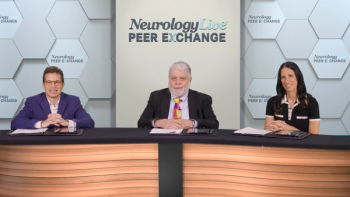
Intermittent Midazolam Administration Yields Return to Functionality for Seizure Cluster Episodes
Data from this post-hoc analysis show slight differences between repeated administration of 1 and 2 doses of midazolam.
Data from a post-hoc analysis of a phase 3, open-label extension trial (P261-402; NCT01529034) demonstrates that most patients that suffered seizure clusters (SCs) returned to full baseline functionality (FBF) within 24 hours of repeated intermittent administration of 1 or 2 midazolam nasal spray (MDZ-NS) doses after an SC episode (SCE).
These findings were presented virtually at the
During the trial, 1 dose of 5-mg MDZ‐NS was administered when patients experienced a SC and a second was administered if seizures continued past 10 minutes or recurred within 6 hours. In this post-hoc analysis, Detyniecki and colleagues used the Kaplan-Meier method to analyze the time to return to FBF. Time to return to FBF was assessed from the time of MDZ-NS administration in SCEs treated with 1 dose and from the time of the second MDZ-NS dose in SCEs treated with 2 doses.
READ MORE:
Detyniecki and colleagues analyzed data from 161 patients that experienced 1996 SCEs treated with MDZ-NS. Of these SCEs, 60% (n = 1201) were treated with 1 dose and 40% (n = 795) were treated with 2 doses. In SCEs treated with 1 dose, 97.2% of cases saw patients return to FBF within 24 hours with a median time of 1.2 hours (interquartile range [IQR], 0.4–2.4). In SCEs treated with 2 doses, 94.2% saw patients return to FBF within 24 hours with a median time of 1.3 hours (IQR, 0.5–3.5).
The estimated median time to return to FBF was generally stable over repeated intermittent use of MDZ-NS, as seen with the 1–45 SCEs assessed, with 30% of patients estimated to return to FBF within 30 minutes and almost 50% within 1 hour in both SCEs treated with 1 and 2 MDZ-NS doses. In patients treated with 1 MDZ-NS dose, the estimated proportion of patients returning to FBF within 2, 4, and 6 hours of MDZ-NS administration was higher versus 2 doses. Over the course of repeated intermittent use of MDZ-NS, the estimated proportion of patients returning to FBF within 2 h of MDZ-NS administration increased by number of SCEs treated.
“The number of MDZ-NS doses administered does not seem to be a key influencer on the time to return to FBF. Further investigation is needed to identify the contributing factors,” Detyniecki and colleagues concluded. “These data further support the favorable profile of repeated intermittent use of MDZ-NS in patients with SCs in terms of time to return to FBF.”
For more coverage of AES 2020,
REFERENCE
Detyniecki K, Brunnert M, Campos R, Dimova S, Wheless J. Return to full baseline functionality after repeated intermittent use of midazolam nasal spray in patients with seizure clusters: post hoc analysis of an open-label extension trial. Presented at AES 2020 Annual Meeting; December 4–8, 2020. Abstract 135.
Newsletter
Keep your finger on the pulse of neurology—subscribe to NeurologyLive for expert interviews, new data, and breakthrough treatment updates.





































